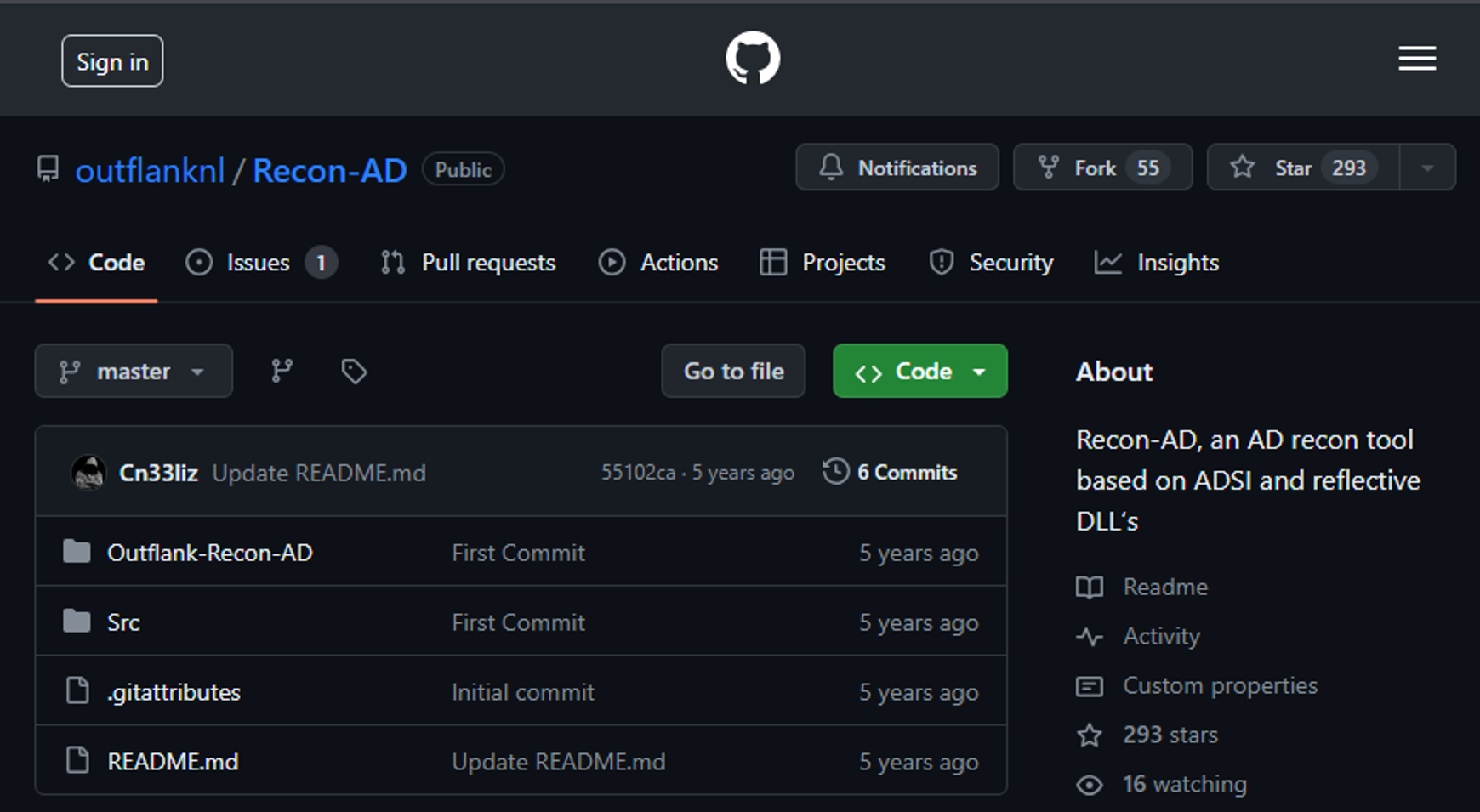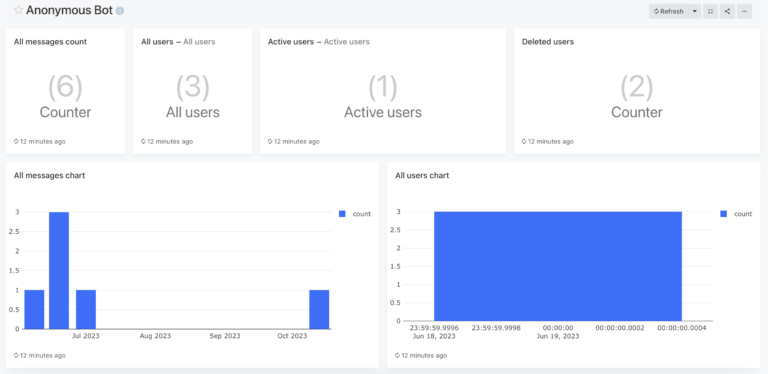Active Directory Internal Intelligence via Cobalt Strike
Introduction
With the growth of automated computing systems and the increase in attacks on these systems, the issue of monitoring the operating systems on the basis of which any information system in the company operates has suddenly arisen. In these operating systems, new classes of security tools are installed/enabled. Monitoring of information systems is becoming deeper, and the analytics of atomic events is becoming more complex.
As part of internal intelligence, attackers often use the PowerShell tool to collect information about a domain, which generates greater interest in monitoring this tool from information security event monitoring units.
To move away from the concept of using PowerShell and .NET, remain more invisible and minimize the time spent reconnaissance of the domain controller, experts from the Red Team Outflank created a script for Cobalt Strike – Recon-ADwritten in C/C++ based on ADSI and reflective DLL.
Well, let's proceed to a more detailed study of this solution.
This article is presented for educational purposes only. Red Team community “GISCYBERTEAM” is not responsible for any consequences of its use by third parties.
Installation
Before installation, we will need to have a deployed Cobalt Strike server; in our example, we are using Cobalt Strike version 4.9.
To install the script we need to perform the following steps:





After these steps we can start using the Recon-AD tool.
Description of functionality and application
This tool consists of a main script and seven DLL files (the names are similar to the commands in Cobalt Strike):
Recon-AD-Domain – used to list information about the domain (domain name, GUID, site name, password policy, list of domain controllers).
Recon-AD-Users – used to obtain Active Directory “Users” objects with attributes for a given request.
Recon-AD-Groups – used to obtain Active Directory “Groups” objects.
Recon-AD-Computers – used to obtain Active Directory “Computers” objects with attributes for a given request.
Recon-AD-SPNs – used to display a list of Active Directory accounts, service principals (SPNs) and display useful attributes.
Recon-AD-AllLocalGroups – used to obtain a list of local groups on the host and members of these groups.
Recon-AD-LocalGroups – used to obtain information on a specific local group (the “Administrators” group by default).
Having studied the main components of this toolkit, we can begin to demonstrate practical application; for this we will use a test bench. This stand consists of several virtual hosts connected to a domain controller.
We will simulate receiving initial access to the host “GISPENTEST2” and carry out internal reconnaissance there using “Recon-AD” as part of Cobalt Strike.

Getting domain information
To obtain information about the domain to which we have access, we will run the following command through an interactive host session in Cobalt Strike.
Recon-AD-DomainAs a result, we get information about our test domain.

Obtaining information about domain users
To display information about all domain users, run the following command.
Recon-AD-Users allThis command will display a complete list of Active Directory users with all attributes.

To filter the request, we can use the following command options.
Recon-AD-Users <User-Name>
Recon-AD-Users *admin* # имя УЗ содержит текст "admin"An example of the output of one of them is shown below.
[03/14 13:05:59] beacon> Recon-AD-Users *Hack*
[03/14 13:05:59] [+] Let's enumerate user *Hack*
[03/14 13:05:59] [*] Tasked beacon to spawn Recon-AD-Users
[03/14 13:05:59] [+] host called home, sent: 128064 bytes
[03/14 13:06:00] [+] received output:
[+] objectClass:
top
person
organizationalPerson
user
[+] cn:
Gorilla GH. Hacker
[+] sn:
Gorilla
[+] c:
RU
[+] l:
Saint-Petersburg
[+] description:
Chief of pentesters
[+] telephoneNumber:
89999999998
[+] givenName:
Hacker
[+] initials:
GH
[+] distinguishedName:
CN=Gorilla GH. Hacker,CN=Users,DC=gtnp,DC=local
[+] instanceType:
4
[+] whenCreated:
3/14/2024 4:02:02 PM
[+] whenChanged:
3/14/2024 4:04:26 PM
[+] displayName:
Gorilla GH. Hacker
[+] uSNCreated:
high: 0 low: 80069
[+] uSNChanged:
high: 0 low: 80090
[+] co:
Russia
[+] name:
Gorilla GH. Hacker
[+] objectGUID:
{ADA81D30-8616-43D5-B3DC-BE4B569F9293}
[+] userAccountControl:
66048
[+] badPwdCount:
0
[+] codePage:
0
[+] countryCode:
643
[+] badPasswordTime:
No value set.
[+] lastLogoff:
No value set.
[+] lastLogon:
No value set.
[+] pwdLastSet:
3/14/2024 9:02:03 AM
[+] primaryGroupID:
513
[+] objectSid:
S-1-5-21-3395708365-1461986185-1509986597-1166
[+] accountExpires:
Never Expires.
[+] logonCount:
0
[+] sAMAccountName:
GorillaHacker
[+] sAMAccountType:
805306368
[+] userPrincipalName:
GorillaHacker@gtnp.local
[+] objectCategory:
CN=Person,CN=Schema,CN=Configuration,DC=gtnp,DC=local
[+] dSCorePropagationData:
3/14/2024 4:02:03 PM
1/1/1601
[+] mail:
gh@somemail.ru
[+] ADsPath:
LDAP://CN=Gorilla GH. Hacker,CN=Users,DC=gtnp,DC=local
[+] Password expire settings:
password never expires
[+] Account options:
account enabledGetting information about domain groups
To display information about all domain groups, run the following command.
Recon-AD-Groups allThis command will display a complete list of Active Directory groups with all attributes.

To filter the request, we can use the following command options.
Recon-AD-Groups <Group-Name>
Recon-AD-Groups admin # имя группы содержит текст "admin"Obtaining information about domain computers
To display information about all computers in the domain, run the following command.
Recon-AD-ComputersTo filter the request, we can use the following command options.
Recon-AD-Computers <Computer-Name>
Recon-AD-Computers serv # имя хоста содержит текст "serv"Retrieving SPN Service Member Information
To display this information, run the following command.
Recon-AD-SPNsThis command will display a complete list of SPN service members.

Getting information about local groups
To display this information, run the following command.
Recon-AD-AllLocalGroups <Computer-Name>As a result, we get a complete list of local groups on the host and their members.

Getting information about a given local group
To display this information, run the following command.
Recon-AD-LocalGroups <Computer-Name> <Group-Name>As part of this request, we requested information for the “Users” group.

Conclusion
In this article we looked at the “Recon-AD”: its features, installation, functionality and practical application. Its use will reduce the time required to obtain the necessary information for carrying out the next stages of testing (attacks) of the compromised infrastructure, as well as remain more undetected by security measures in the corporate segment.





